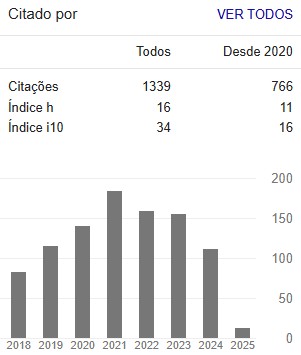DOES LIDOCAINE HAVE ANTIMICROBIAL EFFECTS AGAINST MAJOR PATHOGENS THAT INFECT WOUNDS? AN “IN VITRO” STUDY
Abstract
Local anesthetics are commonly used in medicine and dentistry and have a low cost, but their action as a microbicidal agent is still controversial. This study aimed to evaluate the antimicrobial effects of lidocaine against bacteria that most commonly infect surgical wounds. We evaluated Staphylococcus aureus, Staphylococcus epidermidis, Escherichia coli, Proteus mirabilis and Enterococcus faecalis. The solutions tested were saline, chlorhexidine, lidocaine (solution and pure) and an antibiotic solution. The agar diffusion test was performed using Petri dishes. The plates tested with lidocaine (pure or solution) presented no inhibition halo. The antibiotic solution presented the largest inhibition halos for all the bacteria (p < 0.05). Chlorhexidine formed an inhibition halo similar to that of the antibiotic solution for Escherichia coli (p > 0.05). Lidocaine did not present an antimicrobial effect for any of the tested bacteria. However, the antibiotic solution and the chlorhexidine inhibited the growth of all bacteria.
Downloads
Downloads
Published
Issue
Section
License
Os artigos submetidos à revista Colloquium Vitae estão licenciados conforme CC BY-NC-ND. Para mais informações sobre essa forma de Licenciamento, consulte: http://creativecommons.org/licenses/by-nc-nd/4.0/.
A disponibilização é gratuita na Internet, para que os usuários possam ler, fazer download, copiar, distribuir, imprimir, pesquisar ou referenciar o texto integral dos documentos, processá-los para indexação, utilizá-los como dados de entrada de programas para softwares, ou usá-los para qualquer outro propósito legal, sem barreira financeira, legal ou técnica.

